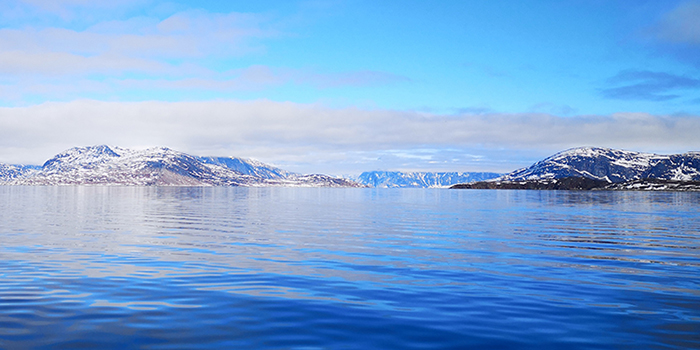Study Finds Traces of Plastic in All Seafood Samples
A study of five different seafoods has found traces of plastic in every sample tested.
Researchers bought oysters, prawns, squid, crabs and sardines from a market in Australia and analysed them using a newly developed method that identifies and measures five different plastic types simultaneously.
The study - by the University of Exeter and the University of Queensland - found plastic levels of 0.04 milligrams (mg) per gram of tissue in squid, 0.07 mg in prawns, 0.1 mg in oysters, 0.3 mg in crabs and 2.9 mg in sardines.
"Considering an average serving, a seafood eater could be exposed to approximately 0.7 mg of plastic when ingesting an average serving of oysters or squid, and up to 30 mg of plastic when eating sardines, respectively," said lead author Francisca Ribeiro, a QUEX Institute PhD student.
"For comparison, 30 mg is the average weight of a grain of rice.
"Our findings show that the amount of plastics present varies greatly among species, and differs between individuals of the same species.
"From the seafood species tested, sardines had the highest plastic content, which was a surprising result."
Co-author Professor Tamara Galloway, of Exeter's Global Systems Institute, said: "We do not fully understand the risks to human health of ingesting plastic, but this new method will make it easier for us to find out."
The researchers bought raw seafood - five wild blue crabs, ten oysters, ten farmed tiger prawns, ten wild squid and ten wild sardines.
They then analysed them for the five different kinds of plastics that can be identified by the new method.
All of the plastics are commonly used in plastic packaging and synthetic textiles and are frequently found in marine litter: polystyrene, polyethylene, polyvinyl chloride, polypropylene and poly(methyl methacrylate).
In the new method, edible tissues are treated with chemicals to dissolve the plastics present in the samples. The resulting solution is analysed using a highly sensitive technique called Pyrolysis Gas Chromatography Mass Spectrometry which can identify the different kinds of plastic in the sample at the same time.
Polyvinyl chloride was found in all samples, while the plastic found in highest concentrations was polyethylene.
Microplastics are very small pieces of plastic that pollute much of the planet, including the sea where they are eaten by marine creatures of all types, from small larvae and planktonic organisms to large mammals.
Studies to date show that microplastics not only enter our diet from seafood, but also from bottled water, sea salt, beer and honey, as well the dust that settles on our meals.
The new testing method is a step towards defining what microplastic levels can be considered harmful and assessing the possible risks of ingesting microplastics in food.
The paper, published in the journal Environmental Science & Technology, is entitled: "Quantitative Analysis of Selected Plastics in High-Commercial-Value Australian Seafood by Pyrolysis Gas Chromatography Mass Spectrometry."
Source: https://www.exeter.ac.uk/
High Concentrations of Microplastics can Impact the Marine Food Web
Tiny plastic particles measure around 0.1 mm in length, the same size as that of phytoplankton, which happens to be the favorite food of the copepods.

Scientists from the DTU Aqua, DTU Environment, Aalborg University, and the Greenland Institute of Natural Resources detected such microplastics in water sampled from the fjord Nuup Kangerlua (or Godthåbsfjorden), running beyond Nuuk and further into the sea west of Greenland.
The researchers discovered around 1 particle for each 10 L of water, the concentration of which was similar to the one previously detected in seawater elsewhere in the North Atlantic.
However, the team had anticipated finding relatively higher concentrations, because German scientists have quantified extremely high concentrations of microplastics in ice and snow on the glaciers that are melting into Nuup Kangerlua.
The study results were recently published in Environmental Pollution—a scientific journal.
Nielsen emphasizes that plastic concentrations that have been detected so far may not have considerable adverse impacts. However, if these concentrations become relatively worse, this may lead be a serious problem.
Pumps Caught Much Smaller Particles than Nets
The research team from the VELUX project, called MarinePlastic, obtained samples from five locations along Nuup Kangerlua. They employed uniquely designed pumps featuring filters that can collect even the smallest microplastics.
However, for comparative reasons, the team also used conventional Bongo nets to collect samples. Such Bongo nets can collect a thousand times fewer microplastics when compared to the pumps. The nets only trapped microplastics that measured above 300 μm.
Nielsen added, “Using pumps like we’ve done in this case, you’ll find far higher concentrations of very small MPs—which is what is most bio-available and potentially able to enter the marine food webs via copepods.”
Nuuk is a Point Source of Plastic
The research vessel cruised from inside the fjord, wherein the glacier water runs into the fjord, beyond Nuuk, and finally reaches the mouth of the fjord. In five locations, along the route, samples were gathered, and the highest concentration of microplastics was detected around Nuuk and also further out towards the sea.
Nuuk is the largest city in Greenland and has around 18,000 inhabitants. However, it lacks effective sewage treatment plants.
Polyester, the most abundant kind of plastic, is utilized, for instance, in plastic bottles and synthetic fabrics. Nylon or polyamide is the second-most abundant type of plastic and is used in fishing nets, for instance.
Journal Reference:
Rist, S., et al. (2020) Quantification of plankton-sized microplastics in a productive coastal Arctic marine ecosystem. Environmental Pollution. doi.org/10.1016/j.envpol.2020.115248.
Source: https://www.aqua.dtu.dk/english
No comments:
Post a Comment